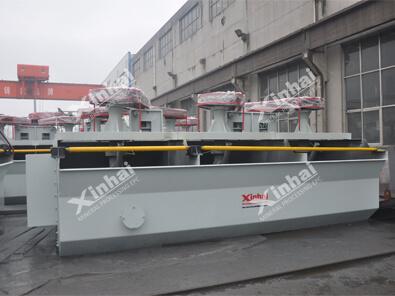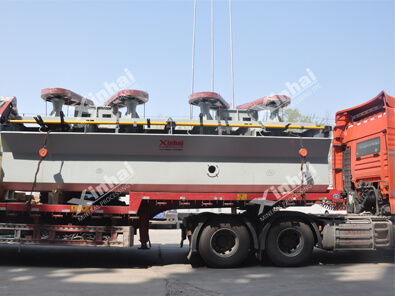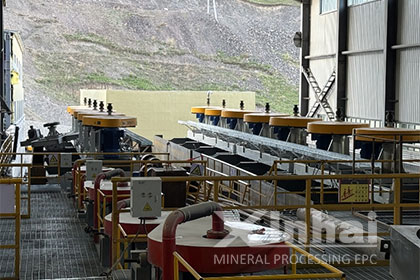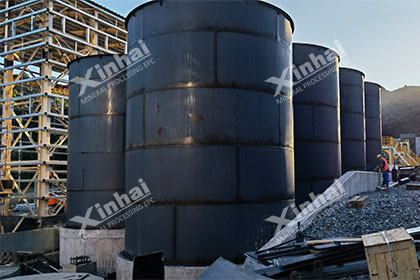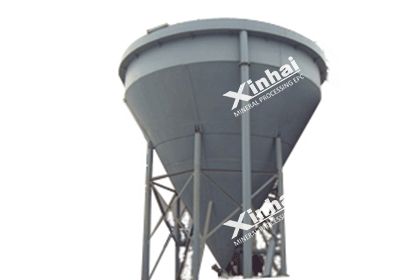Copper Flotation Process | What is Flotation in Sulfide Copper Extraction?
 Laura
Laura
 May 27, 2022
May 27, 2022
 1343
1343
If you want to know more details about equipment, solutions, etc, please click the button below for free consultation, or leave your requirements!
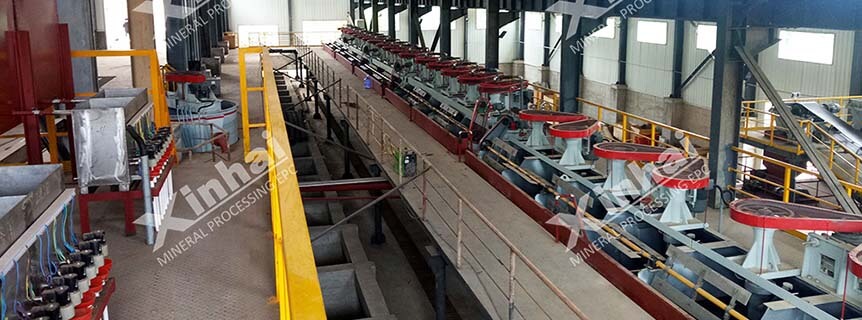
( Gold-copper flotation plant in Laos with 500tpd capacity )
Copper is one of the important non-ferrous metals, and flotation method is often used for selection in the production process. According to the different oxidation rates of ore, copper ore can be divided into sulfide copper ore, copper oxide ore and mixed copper ore, and the flotation method of various copper ore will be different in the specific application process.
Usually, sulfide copper ore mainly includes single sulfide copper ore and polymetallic sulfide copper ore. The former has a relatively simple flotation process, while the latter has a more complicated flotation process. Below we will mainly explain the flotation process of sulfide copper ore.
Let's start!
01 Single Sulfide Copper Flotation Process
BackThe mineral composition of a single sulfide copper ore is simple, and the copper minerals mainly include chalcopyrite, chalcocite, bornite, copper blue and a small amount of copper oxide minerals. Gangue minerals vary with the type of deposit, mainly quartz, calcite, feldspar, dolomite, sericite, chlorite, etc. Due to the large difference in floatability between copper minerals and gangue minerals, flotation methods are often used for selection.
It is worth noting that due to the different occurrences of single sulfide copper ore, its structure and structure change greatly, which makes the separation of copper minerals and gangue difficult to separate, and the grinding fineness has become the influence of single sulfide. The key to copper flotation indicators. Generally, there are three main types of flotation processes for single sulfide copper ore.
l One Stage Grinding-Flotation Process
The first-stage grinding-flotation process is suitable for the treatment of ore with coarse and uniform copper minerals embedded in particle size, loose binding of copper minerals and gangue, and smooth and flat contact edges.
Usually, the raw ore is ground to -200 mesh and accounts for 50-60%, and the copper minerals can basically be dissociated as a monomer. After rough selection and sweep selection, a better flotation index can be obtained after one to three selections. The flotation process is simple and the beneficiation cost is low, and it is mostly used in small and medium-sized copper beneficiation plants.
l One-Stage Grinding-Flotation-Coarse Concentrate Regrinding Process
The one-stage grinding-flotation-rough concentrate regrinding process is mostly suitable for processing single sulfide ore or copper-molybdenum ore of porphyry copper ore.
According to the embedded characteristics of copper minerals, 40-70% of the raw ore is ground to -200 mesh after one-stage grinding, and a large amount of tailings are discarded by roughing and sweeping. After the coarse concentrate is re-ground, copper concentrate can be obtained after two or three beneficiaries. The selected tailings in the flotation cycle can be discarded after scavenging, or returned to the roughing cycle after being concentrated. A few copper ore dressing plants will regrind the middle ore separately for post-processing. This technological process can make the copper ore dressing plant obtain better economic benefits when the raw ore grade is low and the processing capacity is large. In addition, due to the regrinding of the coarse concentrate, the particle size is finer, the monomer dissociation degree of copper minerals, gangue minerals and pyrite is better, and the quality of the flotation concentrate is also higher.
l Two-Stage Grinding-Two-Stage (or One-Stage) Flotation Process
For copper ore with uneven thickness, in order to dissociate most of the copper mineral monomers, it is necessary to grind the ore to -200 mesh, accounting for 80%, or even finer. At this time, the two-stage grinding is superior to the one-stage grinding in terms of grinding efficiency and preventing over-crushing of copper minerals.
When two-stage grinding-two-stage flotation is used, part of the coarse-grained copper minerals can be floated out after the ore is roughly ground in the first stage to avoid over-grinding. This part of the concentrate is generally of high grade and can be directly used as concentrate, or entered into the final selection, or combined with the concentrate obtained by flotation after two-stage grinding. If there are few coarse-grained copper minerals in the ore, a two-stage grinding-one-flotation process can be used. The flotation cycle adopts sweeping and two to three times of beneficiation, and the medium ore generally returns to the second-stage grinding cycle. Relatively speaking, the grinding cost of this process is relatively high, the equipment configuration and production operation are more complicated, and it is mostly used in large and medium-sized copper concentrators.
02 Polymetallic Sulfide Copper Flotation Process
BackGenerally, polymetallic sulfide copper ore not only contains a variety of copper minerals, but also often coexists with various minerals such as pyrite, galena, sphalerite, etc. The mineral structure and composition are complex, and the symbiotic relationship between minerals is dense. Based on the above ore characteristics, the flotation process of polymetallic sulfide copper minerals mainly includes the following categories.
l Multi-Stage Flotation Process
The multi-stage flotation process is mainly aimed at sulfide copper minerals containing iron sulfide, and its composition is relatively simple. Therefore, the multi-stage flotation process is a conventional sulfide copper ore flotation process, and its focus is on the separation of copper and sulfur. Generally, the multi-stage roughing-multi-stage selection-sweeping closed-circuit flotation process can be used to obtain good recovery effect, but for sulfide copper ore with complex composition, the ideal separation effect cannot be achieved.
l Step-by-Step Priority Flotation Process
Distribution priority flotation is suitable for more complex sulfide copper ores, which have various types of copper ores, mainly azurite and arsenic. Although the focus is still on the separation of copper and sulfur, due to the complex structure, the conventional flotation process cannot obtain qualified copper concentrates.
Due to the different floating speeds of various copper ores, the copper minerals that are easy to float can be selected first, and then the copper minerals that are difficult to float can be re-grinded and re-selected, and the copper concentrate can be combined and recovered to improve the grade and recovery rate. be guaranteed.
l Flotation-Mixed Concentrate Separation Process
The flotation-mixed concentrate separation process is mainly used in sulfide copper ores with lower grades and complex symbiotic relationships with chalcopyrite, sphalerite and galena. The raw ore is subjected to rough grinding and rough separation to discard a large amount of gangue minerals to obtain a copper-lead-zinc mixed concentrate, and then separate the copper-lead-zinc concentrate to obtain a single copper mineral. This process can recover copper, lead and zinc separately, but it is easy to cause incomplete separation of mixed concentrates.
l Equal Flotation Process
The equal flotation process is based on the floating speed of copper minerals and other metal minerals such as lead and zinc, and the minerals with fast floating speed and slow floating speed are separately flotated, which can eliminate the effect of flotation residual chemicals on flotation separation. Influence, reduce the dosage of chemicals, but the technological process is more complex, the consumption time is longer, and more grinding equipment is required.
03Summary
BackAbove we mainly described the flotation process of single sulfide copper ore and polymetallic sulfide copper ore. However, in the actual copper ore flotation beneficiation, the flotation process and flotation reagents used by different copper ore types are different. It is recommended to carry out beneficiation experiments first to understand the properties and characteristics of the ore, and comprehensively consider the investment budget and the actual situation of the beneficiation plant to select the appropriate flotation process and chemical system, so as to obtain the ideal flotation index and economic benefits.
Welcome to click the chat button or consultation button to learn more about copper flotation process.
 +86 183 3575 8886
+86 183 3575 8886 pinklaurabao@gmail.com
pinklaurabao@gmail.com




 Message
Message Chat Now
Chat Now


